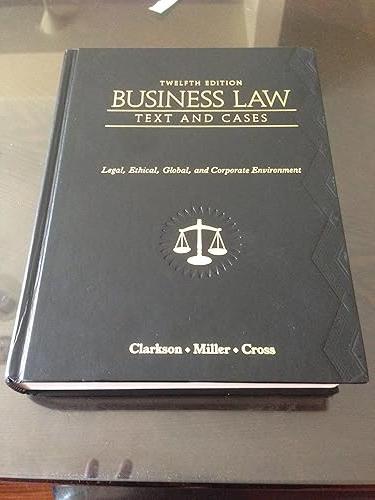The city of New London (hereinafter City) sits at the junction of the Thames River and the
Question:
The city of New London (hereinafter City) sits at the junction of the Thames River and the Long Island Sound in southeastern Connecticut. Decades of economic decline led a state agency in 1990 to designate the City a
“distressed municipality.” In 1996, the Federal Government closed the Naval Undersea Warfare Center, which had been located in the Fort Trumbull area of the City and had employed over 1,500 people. In 1998, the City’s unemployment rate was nearly double that of the State, and its population of just under 24,000 residents was at its lowest since 1920.
These conditions prompted state and local offi cials to target New London * * * for economic revitalization.
* * * In February [1998]
the pharmaceutical company Pfi zer Inc. announced that it would build a $300 million research facility on a site immediately adjacent to Fort Trumbull; local planners hoped that Pfi zer would draw new business to the area * * * .
* * * *
The city council approved [a]
plan in January 2000 [to redevelop the area that once housed the federal facility]. The [City] successfully negotiated the purchase of most of the real estate in the 90-acre area, but its negotiations with [some of the property owners] failed. As a consequence, in November 2000, the [City] initiated * * * condemnation proceedings * * * .
* * * *
* * * Susette Kelo has lived in the Fort Trumbull area since 1997.
* * * She prizes [her house] for its water view.
In December 2000 [Kelo and others] brought this action in [a Connecticut state court against the City and others]. They claimed, among other things, that the taking of their properties would violate the
“public use” restriction in the [U.S.
Constitution’s] Fifth Amendment.
* * * [The court issued a ruling partly in favor of both sides.]
* * * Both sides took appeals to the Supreme Court of Connecticut,
[which] held * * * that all of the City’s proposed takings were valid.
* * * *
We granted certiorari to determine whether a city’s decision to take property for the purpose of economic development satisfi es the “public use” requirement of the Fifth Amendment.
* * * *
* * * This Court long ago rejected any literal requirement that condemned property be put into use for the general public.
* * * Not only was the “use by the public” test diffi cult to administer
(e.g., what proportion of the public need have access to the property?
at what price?), but it proved to be impractical given the diverse and always evolving needs of society.
Accordingly, * * * this Court * * *
embraced the broader and more natural interpretation of public use as “public purpose.” [Emphasis added.]
The disposition of this case therefore turns on the question whether the City’s development plan serves a
“public purpose.”
* * * *
Viewed as a whole, our jurisprudence has recognized that the needs of society have varied between different parts of the Nation, just as they have evolved over time in response to changed circumstances.
* * * For more than a century, our public use jurisprudence has wisely eschewed [avoided] rigid formulas and intrusive scrutiny in favor of affording legislatures broad latitude in determining what public needs justify the use of the takings power. [Emphasis added.]
* * * *
Those who govern the City were not confronted with the need to remove blight in the Fort Trumbull area, but their determination that the area was suffi ciently distressed to justify a program of economic rejuvenation is entitled to our deference.
The City has carefully formulated an economic development plan that it believes will provide appreciable benefi ts to the community, including—but by no means limited to—new jobs and increased tax revenue. As with other exercises in urban planning and development, the City is endeavoring to coordinate a variety of commercial, residential, and recreational uses of land, with the hope that they will form a whole greater than the sum of its parts.
To effectuate this plan, the City has invoked a state statute that specifi -
cally authorizes the use of eminent domain to promote economic development.
Given the comprehensive character of the plan, the thorough deliberation that preceded its adoption, and the limited scope of our review, it is appropriate for us * * *
to resolve the challenges of the individual owners, not on a piecemeal basis, but rather in light of the entire plan. Because that plan unquestionably serves a public purpose, the takings challenged here satisfy the public use requirement of the Fifth Amendment.
[Emphasis added.]
* * * *
The judgment of the Supreme Court of Connecticut is affi rmed.
Questions:-
1. Why did the United States Supreme Court grant certiorari in this case, and what did the Court hold with respect to the principal issue?
2. Considering the impact of the majority’s ruling, what are some arguments against this decision?
Step by Step Answer:

Business Law Text And Cases Legal Ethical Global And Corporate Environment
ISBN: 9780538470827
12th Edition
Authors: Kenneth W. Clarkson, Roger LeRoy Miller, Frank B. Cross





